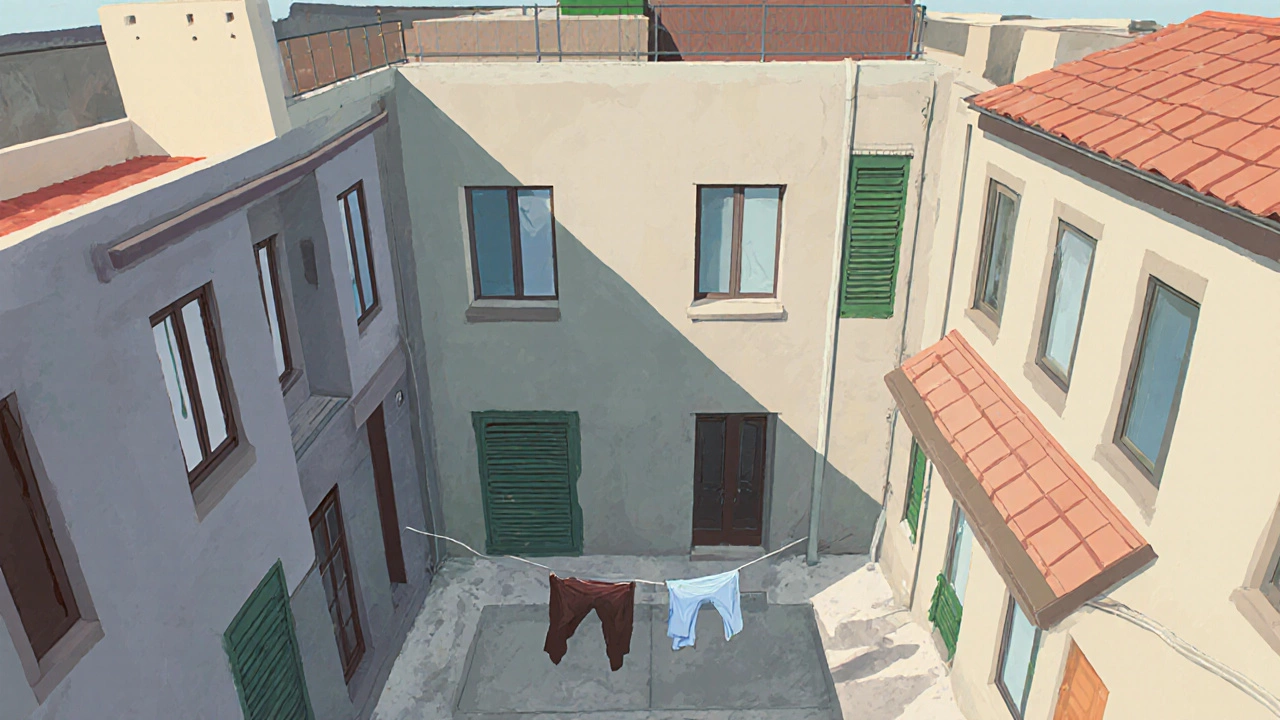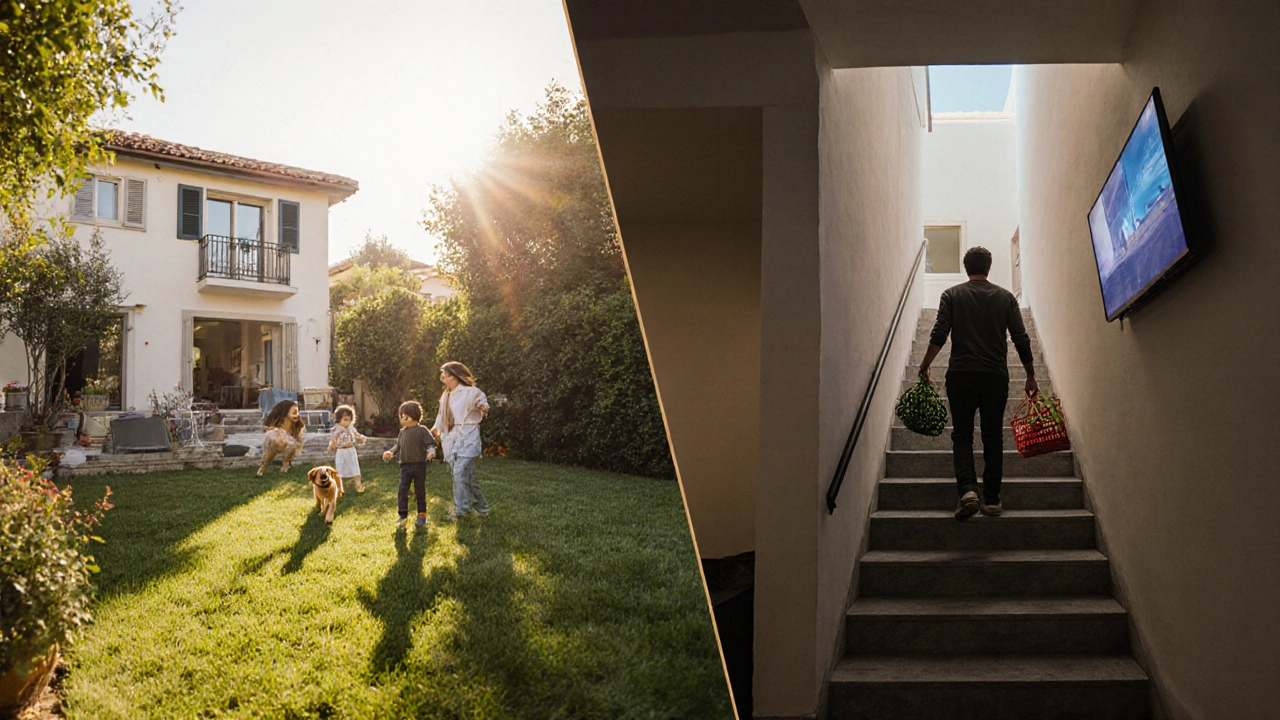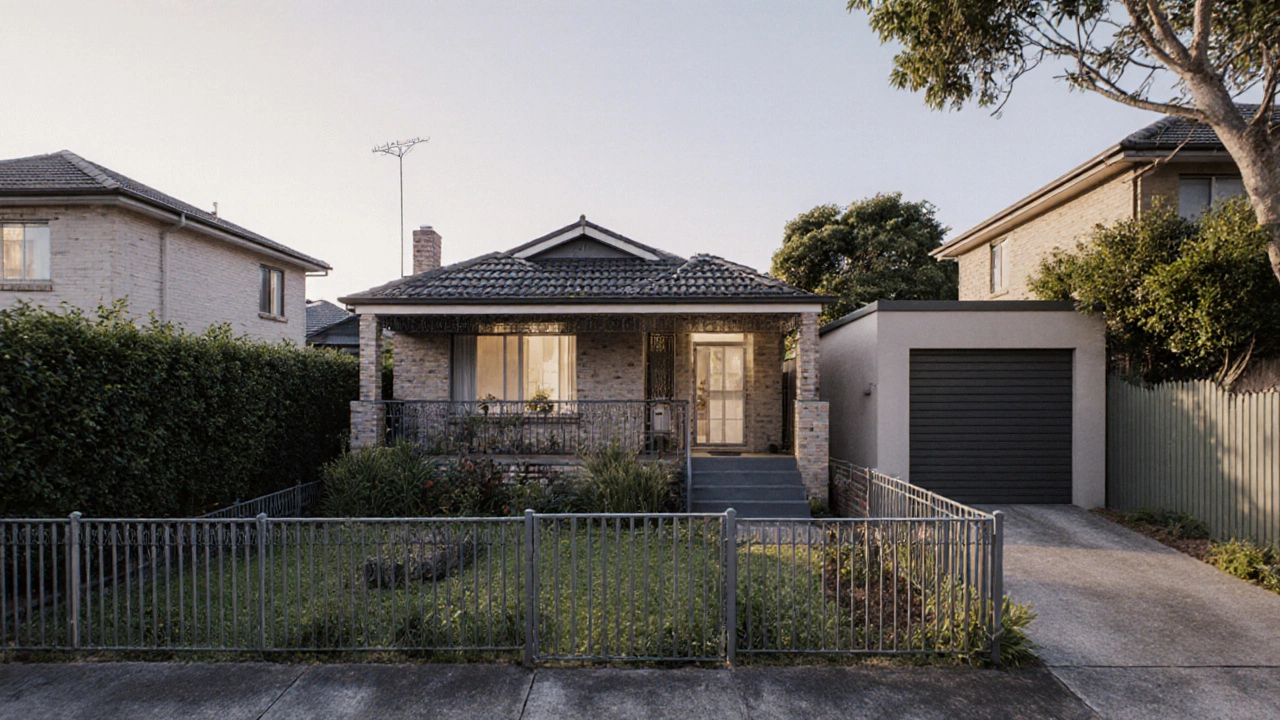Villa vs Townhouse Decision Calculator
Answer these questions to find your perfect match
Select your priorities to see which property type aligns best with your lifestyle.
When you're looking at homes for sale, especially in growing areas like Sydney’s outer suburbs or coastal towns, you’ll see two popular options side by side: villas and townhouses. They might look similar at first glance-both are attached, often have a small yard, and are priced lower than standalone houses. But they’re not the same. Choosing between a villa and a townhouse can affect your lifestyle, your costs, and even how much control you have over your property. So what’s the real difference?
What Is a Villa?
A villa, in the Australian context, is typically a single-level, low-density home that’s part of a small group of units-usually no more than four. Think of it as a standalone house that shares one or two walls with a neighbor, but sits on its own titled land. Most villas have their own private entrance, a small front and back yard, and often a garage. They’re designed for low-maintenance living without giving up space.
Villas are common in areas like the Hills District, Penrith, and the Northern Beaches. They’re popular with retirees, young families, and first-home buyers who want more privacy than an apartment but don’t want to deal with a large yard or roof repairs. Unlike apartments, villas are usually strata-titled, meaning you own the land and the building, but you’re part of a small owners’ corporation that handles shared fences, driveways, or landscaping.
What Is a Townhouse?
A townhouse is a multi-level home, usually two or three stories, that’s attached to one or two other homes in a row. They’re built vertically to save space, so you’ll often find them in denser suburbs like Parramatta, Chatswood, or inner-city areas where land is tight. Townhouses typically have a small front courtyard and a rear yard, but the living space is stacked-bedrooms upstairs, living areas downstairs.
Most townhouses are also strata-titled. That means you own your unit, but you share responsibility for common areas like driveways, gardens, or building exteriors. The key difference from villas? Height. Townhouses have stairs. They’re designed for efficiency, not sprawling comfort. You might trade a ground-floor bedroom for a rooftop terrace, or swap a big backyard for a balcony.
Space and Layout: Floor Plans That Shape Your Life
If you hate stairs, a villa is the obvious pick. Most villas are built on one level, so they’re easier for aging residents, people with mobility issues, or anyone who just wants to grab a snack without climbing stairs. Bedrooms, bathrooms, and the living area all open onto the same floor. It’s simple, practical, and quiet.
Townhouses, on the other hand, are built to maximize square footage on a small footprint. That means you’ll likely have your kitchen and living room downstairs, and bedrooms upstairs. If you have kids or plan to, you might love having your own space upstairs-but you’ll also be carrying laundry, groceries, or napping toddlers up and down. The trade-off? More rooms in less land. A typical 3-bedroom townhouse might have 180 square meters of living space, while a villa of the same size might feel more open because it’s all on one level.

Privacy and Noise: Who’s Next Door?
Privacy isn’t just about fences-it’s about who’s on the other side of your wall. Villas usually share only one or two walls, and often have a buffer of garden space between homes. That means less noise from neighbors. You’re more likely to hear birds than footsteps.
Townhouses, especially those built in rows of three or more, often share two or even three walls. If your neighbor has a loud TV, barking dog, or kids playing late, you’ll hear it through the shared walls or ceiling. Sound travels vertically in townhouses. A party downstairs can echo upstairs. Some newer townhouses have better insulation, but it’s not guaranteed. Always ask about soundproofing before buying.
Outdoor Space: Yard vs Courtyard
Villas almost always come with a private, fenced backyard. You can plant a vegetable patch, put up a swing set, or just leave the grass to grow wild. Many also have a small front garden. You own the space, and you control it.
Townhouses usually have a narrow courtyard or patio. It’s enough for a couple of chairs and a BBQ, maybe a small planter box. You won’t fit a pool here. Some townhouses have rooftop terraces, but those are often shared or restricted by strata rules. If you love gardening, outdoor entertaining, or having space for pets to run, a villa gives you more freedom.
Costs: Body Corporate Fees and Maintenance
Both villas and townhouses usually come with body corporate (or strata) fees. But here’s where it gets tricky: villas often have smaller committees and fewer shared features. That means lower fees-sometimes as low as $600 a year. You might only pay for basic insurance, garden maintenance for common areas, and a reserve fund.
Townhouses, especially in newer developments with pools, gyms, or security gates, can cost $1,800 to $3,500 a year in fees. You’re paying for more shared services. That’s fine if you use them. But if you never go to the gym or don’t care about a concierge, you’re still paying for it. Also, townhouses often have more complex building systems-elevators, shared plumbing, multiple roof sections-which can lead to higher unexpected levies if something breaks.

Resale Value and Demand
In Sydney’s market as of 2025, villas are holding their value better than townhouses in most suburbs. Why? Buyers want space and simplicity. A villa feels more like a house. It’s easier to rent out, too-families and professionals prefer the quiet and privacy. Townhouses are popular with investors and first-time buyers because they’re cheaper to enter the market, but they can be harder to sell if they’re in a dense complex with high fees or poor design.
Look at recent sales data in areas like Liverpool or Campbelltown. Villas with three bedrooms, a garage, and a private yard are selling 10-15% faster than similar-sized townhouses. Buyers are willing to pay more for the sense of ownership and space.
Which One Fits Your Life?
Ask yourself these questions:
- Do you want to avoid stairs? → Villa
- Do you need more bedrooms without a big block? → Townhouse
- Do you hate paying for services you don’t use? → Villa
- Are you okay with shared walls and potential noise? → Townhouse
- Do you want to garden or have space for kids and pets? → Villa
- Are you buying as an investment and want the lowest entry price? → Townhouse
There’s no right answer. But if you’re looking for peace, space, and control over your home, a villa gives you more of what most people actually want. Townhouses are a smart choice if you’re on a tight budget and don’t mind trading privacy for affordability.
What to Watch Out For
Before signing anything:
- Check the strata report. Look for upcoming major works-roof replacements, waterproofing, elevator repairs. These can cost thousands.
- Read the by-laws. Some townhouse complexes ban pets, BBQs, or even hanging laundry outside.
- Ask about parking. Villas usually have one or two spots. Townhouses might only offer one, or require you to pay extra for a second.
- Walk through at different times of day. Noise levels change. A quiet morning doesn’t mean quiet at 8 p.m.
Don’t just look at the price tag. Look at the lifestyle. A villa might cost $20,000 more than a townhouse-but if it saves you $1,000 a year in fees, gives you a real backyard, and lets you sleep through the night, that difference pays for itself.
Is a villa the same as a townhouse?
No. A villa is usually single-level, with its own private yard and fewer shared walls. A townhouse is multi-level, often stacked, and shares more walls with neighbors. Villas feel more like detached homes; townhouses are more like apartments with stairs.
Which is cheaper to maintain, a villa or a townhouse?
Villas are generally cheaper. Strata fees are lower because there are fewer shared facilities. Townhouses often come with pools, gyms, or security systems that increase ongoing costs. You also pay more for repairs if the building has complex systems like elevators or shared plumbing.
Can I renovate a villa or townhouse freely?
Both require approval from the strata committee for external changes-painting, adding a deck, or altering the facade. But villas usually have more freedom for internal renovations since you own the full structure. Townhouses often have structural limits due to shared walls and ceilings. Always check the strata by-laws before starting any work.
Do villas appreciate in value faster than townhouses?
In most Sydney suburbs, yes. Villas are seen as more desirable because they offer more space, privacy, and a house-like feel. Buyers are willing to pay a premium. Townhouses can appreciate, but they’re more sensitive to market downturns and high strata fees, which can turn off buyers.
Are villas better for families?
For many families, yes. The single-level layout makes daily life easier-no stairs with strollers or tired kids. Private yards are great for pets and outdoor play. Less noise from neighbors means quieter nights. Townhouses work for smaller families or those in high-demand areas, but villas offer more long-term comfort.

